Did you know that dogs have a unique way of staying cool?
Do dogs sweat? Yes, dogs sweat, but only through their paws. In fact, only 10% of their cooling mechanism involves sweating! That’s right, while humans rely heavily on sweating to regulate body temperature, our canine companions have developed other strategies for beating the heat.
You may be wondering, how do dogs cool themselves down without sweating? Well, it turns out that they primarily use panting as a means of dissipating heat. When dogs pant, moisture evaporates from their tongues and respiratory tract, helping to lower their body temperature. Additionally, dogs also have sweat glands in their paws which can provide some limited cooling.
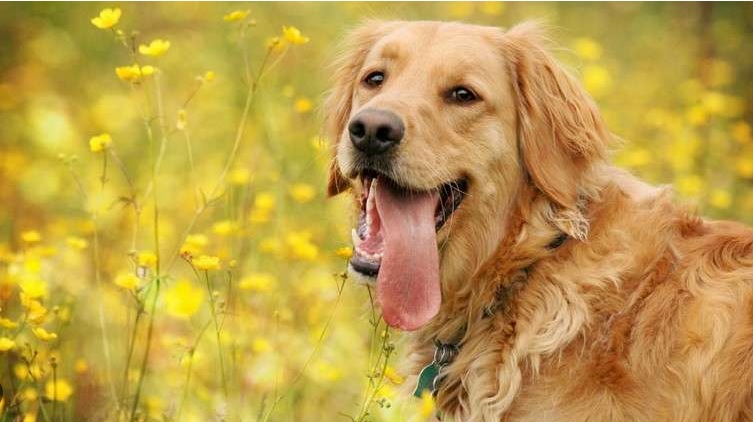
Understanding how dogs regulate their body temperature is crucial for ensuring their well-being, especially during hot summer months or vigorous exercise. By recognizing the signs of overheating and knowing how to help them cool down effectively, you can play an essential role in keeping your furry friend comfortable and safe.
In this article, we will delve into the fascinating world of dog cooling mechanisms. We will explore the science of dog sweating and debunk common misconceptions about dogs’ ability to sweat.
So let’s dive in and learn all about how our canine friends stay cool!
Key Takeaways
- Dogs have a unique way of staying cool, primarily using panting and evaporating moisture from their tongues and respiratory tract.
- Dogs have sweat glands in their paws that provide limited cooling.
- Factors such as breed, coat type, age, health conditions, and environmental factors can affect a dog’s ability to cool down effectively.
- Prevention measures such as providing access to fresh water, avoiding excessive exercise in extreme heat, and creating a comfortable and shaded environment are crucial in avoiding overheating incidents.
How Dogs Cool Themselves Down
You’ll notice that when dogs are hot, they cool themselves down by panting heavily and sticking out their tongues, creating a cute and endearing sight. Dogs don’t sweat like humans do, so panting is their way of regulating body temperature. This is especially important for certain dog breeds that are more prone to overheating, such as Bulldogs or Pugs.
During the summer months, it’s crucial to prioritize your dog’s safety and keep them cool. Make sure they have access to shade and fresh water at all times. Avoid taking them for long walks during the hottest parts of the day and never leave them in a parked car, even for a short period of time.
By following these simple precautions, you can help your furry friend stay comfortable and happy during the hot summer days.
The Science Behind Dog’s Cooling Mechanisms
To keep cool, your furry friend relies on a sophisticated system of panting and paw pads. When dogs pant, they take in large amounts of air, which helps to evaporate moisture from their tongues and upper respiratory tract. This evaporation process cools down their body temperature. Additionally, dogs have specialized sweat glands located on their paw pads.
These sweat glands release a small amount of moisture when the dog’s paws come into contact with a surface. As this moisture evaporates, it helps to cool down the dog’s body temperature as well.
- Dogs’ panting is an effective way for them to regulate their body temperature.
- The rapid breathing during panting allows for greater heat loss through evaporation.
- Dogs’ paw pads contain sweat glands that release moisture when they walk or run on hot surfaces.
By understanding how dogs pant and utilize their paw pads, you can help ensure your furry friend stays cool and comfortable during hot weather or physical activity.
Dogs’ Unique Adaptations for Heat Regulation
When the heat rises, your furry companion becomes a cool breeze, utilizing their panting and paw pads as their very own natural air conditioning system.
But did you know that dogs have even more unique adaptations for heat regulation? Different dog breeds have varying thermal regulation abilities that help them stay comfortable in hot weather.
For example, some breeds have shorter muzzles and nasal passages, which allow for faster air circulation and cooling during panting. Additionally, dogs with longer ears can use them to dissipate heat from their bodies.
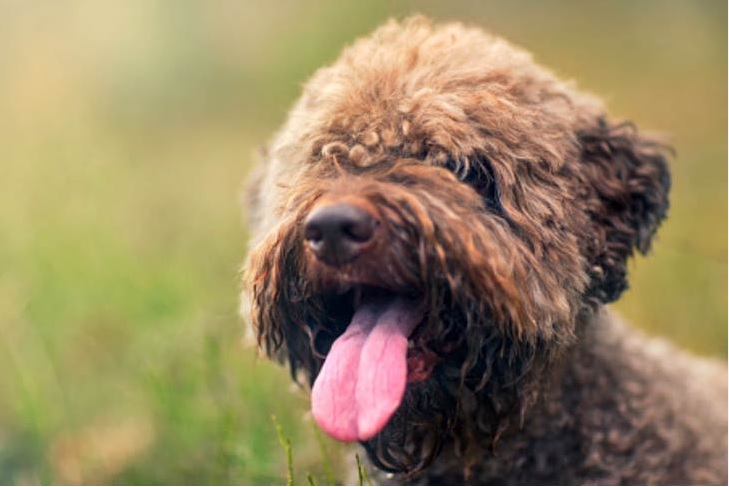
Another interesting adaptation is the presence of sweat glands on a dog’s paw pads. Although dogs don’t sweat like humans do, these sweat glands release small amounts of moisture that evaporate and help cool down their paws.
These fascinating adaptations ensure that your beloved canine companion stays comfortable even in scorching temperatures!
Understanding the Signs of Overheating in Dogs
Be aware of the signs of overheating in your furry friend, as it can be a distressing and potentially dangerous situation. Dogs are more prone to overheating than humans due to their limited ability to regulate body temperature. It is important to recognize the common signs and symptoms of overheating in dogs, such as excessive panting, drooling, rapid heartbeat, weakness or collapse, and vomiting.
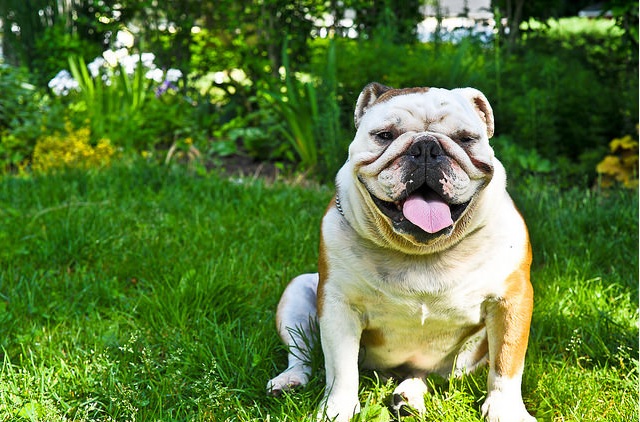
If you notice any of these signs, take immediate action by moving your dog to a cool and shaded area, offering water for hydration, and applying cool (not cold) water to their body. Prevention is key in avoiding overheating incidents:
make sure your dog has access to fresh water at all times, avoid exercising them during peak heat hours, provide proper ventilation in hot spaces, and never leave them unattended in a parked car. By being vigilant and taking necessary precautions, you can keep your furry friend safe from the dangers of overheating.
| Signs of Overheating | Symptoms | Preventive Measures |
|---|---|---|
| Excessive panting | Rapid heartbeat | Access to fresh water |
| Drooling | Weakness or collapse | Avoid peak heat hours |
| Vomiting | Increased body | Proper ventilation |
| temperature |
Factors that Affect Dogs’ Ability to Cool Down
When it comes to a dog’s ability to cool down, there are several factors that come into play.
One of the key factors is their breed and coat type, as some breeds have thicker coats that can make it harder for them to regulate their body temperature.
Additionally, age and health conditions can also affect a dog’s ability to cool down effectively.
Lastly, environmental factors such as high humidity or hot temperatures can further impact a dog’s ability to stay cool.
Breed and Coat Type
If you’ve ever owned a fluffy Siberian Husky or a sleek Greyhound, you know firsthand the unique ways different dog breeds and coat types handle heat. When it comes to keeping cool, breed selection and grooming techniques play a crucial role. Some breeds are better equipped to handle hot weather than others due to their genetic makeup and coat type.
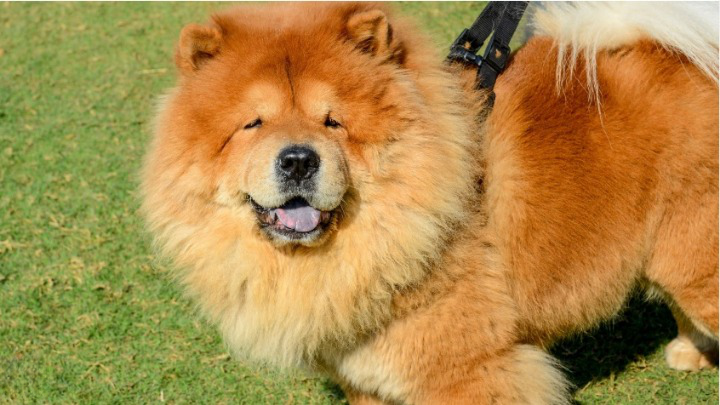
For example, short-haired breeds like Boxers or Dalmatians have an easier time cooling down because their coats allow for better airflow. On the other hand, long-haired breeds such as Collies or Bernese Mountain Dogs may struggle in warm climates as their thick fur traps heat.
Regular grooming is essential for all dogs, but especially those with longer coats. By regularly brushing your dog’s fur and removing any mats or tangles, you can help improve air circulation and prevent overheating.
| Breed | Coat Type |
|---|---|
| Boxer | Short-haired |
| Dalmatian | Short-haired |
| Collie | Long-haired |
| Bernese Mountain Dog | Long-haired |
| Poodle | Curly-coated |
Understanding your dog’s breed and coat type is important when it comes to managing their comfort in hot weather. By selecting a breed that is well-suited for warmer climates and implementing proper grooming techniques, you can ensure your furry friend stays cool and comfortable even on the hottest days.
Age and Health Conditions
Take into consideration your dog’s age and any existing health conditions to ensure their comfort in hot weather. Age-related factors can affect how well a dog handles heat. Older dogs may have a harder time regulating their body temperature, making them more susceptible to overheating.
Additionally, certain health conditions can make it more difficult for dogs to cool down. For example, dogs with respiratory issues or heart problems may struggle to pant effectively, which is their main way of cooling off.
It’s important to monitor your dog closely and provide extra care during hot days if they’re older or have any health-related concerns. This might include providing shade, access to fresh water, and limiting exercise during the hottest parts of the day.
By being proactive and attentive, you can help keep your furry friend safe and comfortable in the heat.
Environmental Factors
To ensure your furry friend stays cool in hot weather, consider the environmental factors such as humidity and air quality, which can greatly impact their comfort level. Did you know that dogs are more susceptible to heatstroke in humid environments because it hampers their ability to effectively cool down through panting?
- Humidity affects a dog’s sweat glands: Dogs have sweat glands, but they’re not as efficient as humans’. Instead of sweating like we do, dogs primarily rely on panting to regulate their body temperature. However, when the air is humid, their panting becomes less effective in cooling them down.
- Effect of humidity on dogs’ cooling mechanisms: High humidity levels make it harder for moisture to evaporate from a dog’s respiratory system. This means that even if they’re panting heavily, the moisture in their breath doesn’t evaporate properly, leading to reduced cooling. As a result, dogs can easily overheat and be at risk of heatstroke in humid conditions.
By being mindful of the humidity levels and taking measures to keep your dog cool during hot and humid days, you can help protect them from overheating and ensure their well-being.
Tips for Keeping Your Dog Cool in Hot Weather
To keep your dog cool in hot weather, make sure to provide plenty of fresh water for them to drink and stay hydrated.
Avoid excessive exercise during extreme heat as it can lead to overheating and dehydration.
Create a comfortable and shaded environment for your dog by providing shelter or access to cool areas indoors.
Providing Plenty of Fresh Water
Ensuring there’s an ample supply of fresh water available is vital for keeping your furry friend hydrated and cool.
Here are three essential ways to provide plenty of fresh water for your dog:
- Keep multiple water bowls: Place several water bowls around the house, both indoors and outdoors, so that your dog always has easy access to a drink.
- Change the water frequently: Dogs prefer fresh, clean water just like we do. Make sure to change their water at least twice a day to keep it cool and refreshing.
- Add ice cubes: Drop a few ice cubes into your dog’s water bowl to help keep the temperature down on hot days.
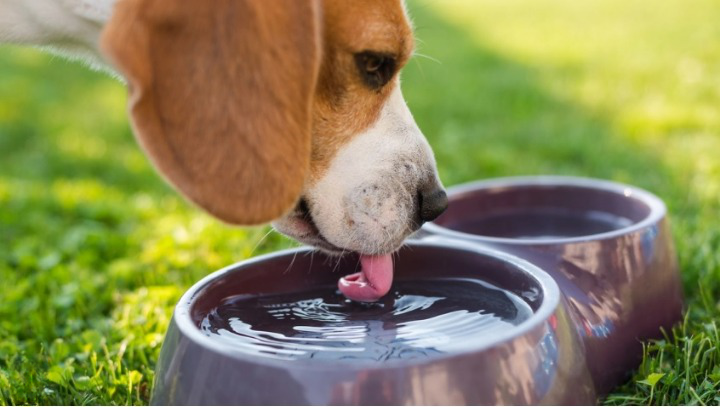
By following these tips, along with providing shade and using cooling bandanas, you’ll be able to ensure that your four-legged companion stays hydrated and comfortable even in the hottest weather.
Remember, serving them well means keeping them cool!
Avoiding Excessive Exercise in Extreme Heat
It’s a scorcher out there, so let’s give those poor puppers a break and avoid overexerting them in this blazing heat.
When it’s hot outside, it’s important to take precautions to prevent heatstroke in dogs. To keep your furry friend safe, make sure to provide plenty of shade and water during exercise.
Avoid exercising during the hottest parts of the day and opt for early morning or late evening walks instead.
Keep an eye on your dog for signs of overheating such as excessive panting or difficulty breathing. If you notice these signs, immediately move your dog to a cooler area and offer water.
Remember, safety should always come first when it comes to our beloved pets!
Creating a Comfortable and Shaded Environment
Now that you know how to avoid excessive exercise in extreme heat, let’s talk about creating a comfortable and shaded environment for your furry friend.
It’s important to provide a cool outdoor space where your dog can relax and beat the heat. One way to do this is by setting up a shady area using umbrellas or canopies. These will provide protection from direct sunlight and help keep the temperature down.
Additionally, consider using cooling fans to create airflow and circulate fresh air around your dog’s resting area. This will help them stay cool and prevent overheating. Remember, dogs don’t sweat like humans do, so it’s crucial to take proactive steps in creating a comfortable environment for them during hot weather.
Common Misconceptions about Dogs and Sweating
Do you ever wonder if dogs sweat like humans do? Well, it turns out that there are some common misconceptions about dogs and sweating. Understanding the difference between humans and dogs is important when it comes to debunking myths about dogs’ sweat glands.
Understanding the Difference between Humans and Dogs
Dogs don’t sweat like humans do, which means they rely on panting to cool down their bodies. This is because dogs have a different cooling system compared to us. Here are some key differences between humans and dogs when it comes to sweating:
- Dogs release heat by panting, allowing moisture to evaporate from their tongues and respiratory tract.
- Unlike humans, who have sweat glands all over their bodies, dogs only have a few sweat glands in their paws.
- Dogs regulate their body temperature by seeking shade or lying on cool surfaces.
- Dogs need to drink plenty of water, especially in hot weather, to prevent dehydration.
- Hot weather can affect dogs’ behavior; they may become lethargic or seek cooler spots.
Remember, your furry friends depend on you for their well-being. Keep them hydrated and provide a cool environment during hot days to ensure they stay comfortable and happy.
Debunking Myths about Dogs’ Sweat Glands
Contrary to popular belief, it’s a common misconception that dogs rely on sweat glands to cool down their bodies. In fact, dogs have very few sweat glands compared to humans. Instead of sweating like we do, dogs primarily rely on panting as a way to regulate their body temperature. This is because dogs have sweat glands only in certain areas such as their paw pads and noses, which are not sufficient for cooling their entire bodies.
Let’s debunk some myths about dog’s sweat glands:
| Myth | Fact |
|---|---|
| Dogs don’t sweat | Dogs do have sweat glands, but they are limited and not used for cooling purposes. |
| Dogs only sweat through their paws | While it’s true that dogs have some sweat glands on their paw pads, they also have them on their noses. |
| Panting is inefficient | Panting may seem unusual to us, but it is an effective way for dogs to release excess heat and keep cool. |
Understanding the truth about dog’s sweat glands helps us better care for our furry friends and ensure they stay comfortable in hot weather conditions.
Importance of Monitoring Your Dog’s Temperature
To ensure the health and well-being of your dog, it’s important to regularly monitor their temperature. One way to do this is by using a thermometer specifically designed for dogs.
By checking for fever or overheating, you can catch any potential health issues early on and take appropriate action. If you notice any abnormal readings, it’s always best to consult with a veterinarian for guidance and advice on how to proceed.
Using Thermometers to Check for Fever or Overheating
Make sure you grab a thermometer to check for fever or signs of overheating in your furry friend. It’s important to monitor your dog’s temperature regularly, especially during hot weather or after intense physical activity. Using thermometers can help you detect any abnormalities and take necessary actions promptly.
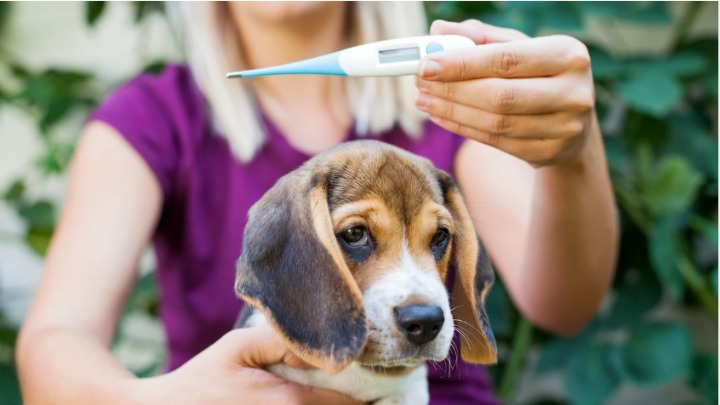
Here are two ways you can use thermometers to keep an eye on your pup’s temperature:
- Rectal Thermometer: This is the most accurate method for checking temperature in dogs. Gently insert the thermometer into your dog’s rectum, about an inch deep, and hold it still for a minute.
- Tip: Lubricate the tip of the thermometer with petroleum jelly for easier insertion.
- Ear Thermometer: These thermometers are less invasive but may be slightly less accurate. Place the probe gently inside your dog’s ear canal and follow the manufacturer’s instructions.
- Tip: Use treats or praise to keep your dog calm during this process.
Remember, monitoring your dog’s temperature using thermometers is a simple yet crucial step in ensuring their well-being and preventing any potential health issues.
Consulting with a Veterinarian for Guidance
If your dog is exhibiting unusual symptoms or behaviors, it’s important to consult with a veterinarian for guidance. They are the experts who can help you understand what might be going on with your furry friend.
Sometimes, there are misconceptions about certain health issues in dogs, and a veterinarian can debunk them for you. They have the knowledge and experience to determine if your dog’s symptoms are something to worry about or if they just need some extra attention.
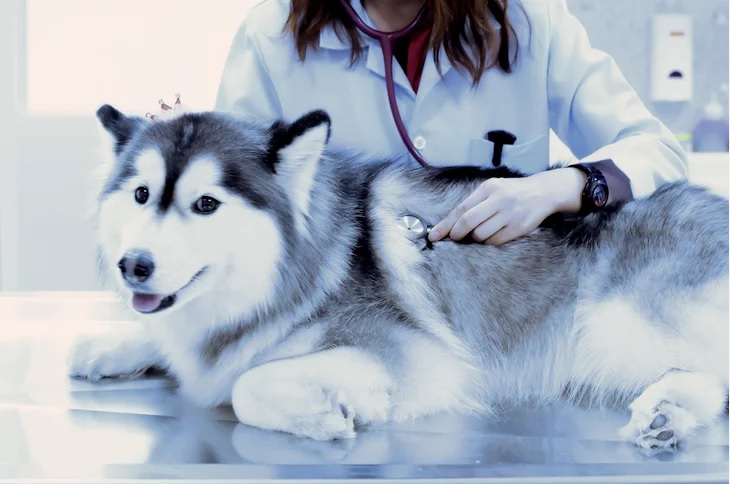
Consulting with a veterinarian also ensures that you receive accurate information and appropriate advice tailored specifically to your dog’s needs. So, don’t hesitate to reach out to a veterinarian when you have concerns about your pet’s health. They are there to serve and help both you and your beloved companion.
Cooling Products and Techniques for Dogs
If you’re looking for ways to keep your dog cool during the hot summer months, there are a few key products and techniques that can help.
Cooling mats and vests are designed to provide immediate relief by absorbing heat from your dog’s body.
Frozen treats and ice packs can also be a great way to cool them down from the inside out.
And don’t forget about wetting their fur and paws, which can help lower their body temperature quickly.
Cooling Mats and Vests
To keep your dog cool and comfortable, try using cooling mats or vests. These innovative products are designed to regulate your dog’s body temperature during hot weather or intense physical activity.
Here are three reasons why cooling mats and vests are a must-have for any caring pet owner:
- Immediate relief: Cooling mats provide instant relief from the heat by absorbing and dissipating your dog’s body heat. They offer a cool surface for your furry friend to lie on, ensuring maximum comfort.
- Portable and versatile: Cooling vests are lightweight and easy to carry, making them perfect for outdoor adventures with your pup. Simply soak the vest in water, wring it out, and put it on your dog. The evaporative cooling effect will help maintain their body temperature while on the go.
- Safe and effective: Both cooling mats and vests are made with non-toxic materials that are safe for dogs of all sizes and breeds. They provide an efficient way to prevent heatstroke or overheating in dogs, allowing you to enjoy worry-free outdoor activities with your beloved pet.
Investing in cooling mats or vests is a simple yet effective way to ensure your furry companion stays cool and happy during those hot summer months!
Frozen Treats and Ice Packs
Now that you know about the benefits of cooling mats and vests for your furry friend, let’s move on to another effective way to keep them cool – frozen treats and ice packs. These refreshing goodies can provide instant relief from the heat and make your dog’s summer a little more enjoyable.
Treats like frozen yogurt, fruit popsicles, or even homemade ice cream can not only help cool them down but also serve as a tasty treat. Additionally, placing ice packs in their bed or near their favorite resting spot can provide extra comfort during hot days. To give you some inspiration, here’s a table showcasing five delicious frozen treat recipes your dog will love:
| Frozen Treat Recipes |
|---|
| 1. Peanut Butter Banana Ice Cream |
| 2. Watermelon Popsicles |
| 3. Yogurt Berry Bites |
| 4. Chicken Broth Ice Cubes |
| 5. Pumpkin Spice Frosty Paws |
With these icy delights, you’ll be sure to see your pup’s tail wagging with joy!
Wetting Fur and Paws
Imagine the blissful sensation of cool water soothing your dog’s fur and paws on a scorching summer day – it’s like nature’s own air conditioning system for your furry companion. Wetting your dog’s fur and paws not only helps them beat the heat, but it also serves as an essential grooming technique.
It helps remove dirt, dust, and allergens that may have accumulated on their coat during outdoor adventures. When wetting your dog, make sure to use lukewarm water and a gentle pet shampoo to avoid irritating their sensitive skin. Afterward, gently pat their fur dry with a clean towel or use a low-heat blow dryer set on the coolest setting.
Remember to pay special attention to drying between their paw pads to prevent moisture buildup that can lead to discomfort or even infections. By incorporating these grooming techniques and drying methods, you’ll ensure your furry friend stays cool, comfortable, and healthy all summer long!
Embracing and Caring for Dogs’ Unique Cooling Mechanisms
Take a moment to appreciate how your furry friend’s remarkable cooling mechanisms allow them to stay comfortable and cool in the heat. Dogs have a unique way of regulating their body temperature, which helps prevent heatstroke and keeps them healthy. While they don’t sweat like humans do, dogs rely on panting to release excess heat from their bodies.
Additionally, their wet noses and paw pads help dissipate heat through evaporation. To assist your dog in staying cool during hot weather, you can provide them with dog cooling accessories such as cooling mats or vests. These accessories work by evaporating water and providing a refreshing sensation for your pet.
By embracing and caring for these natural cooling mechanisms, you can ensure that your dog remains happy and safe even in scorching temperatures.
Frequently Asked Questions
Can dogs sweat like humans?
Yes, dogs can sweat, but not like humans. They have fewer sweat glands, mainly in their paw pads. So while they do sweat a little, it’s definitely not as much as us!
Do all dog breeds have the same ability to regulate their body temperature?
All dog breeds do not have the same ability to regulate their body temperature. Different breeds may have different levels of heat tolerance and cooling mechanisms, which can affect how well they regulate their body temperature.
Are there any signs that indicate a dog is overheating?
To ensure the well-being of your furry friend, look out for signs of heatstroke like excessive panting, drooling, and weakness. Always make sure to provide plenty of shade and water for them to stay cool and hydrated.
Can dogs get sunburned?
Yes, dogs can get sunburned. To protect your furry friend, apply dog sunscreen to exposed areas and consider using protective clothing for dogs. This will help prevent painful burns and keep them safe in the sun.
How can I keep my dog cool during outdoor activities in hot weather?
Keep your pup cool during outdoor activities in hot weather by using dog cooling products like vests or mats, and always provide shade. Remember, they can’t sweat like we do, so it’s crucial to keep them comfortable!
CONCLUSION
Dogs do sweat, but only through their paws. This means that they rely on other strategies to regulate their body temperature, such as panting, licking, and staying in the shade. It is important to be aware of these strategies and to take steps to help your dog stay cool in hot weather.
Adopt a dog from Bone Voyage Dog Rescue and give them a loving home
Donate to Bone Voyage Dog Rescue and help them continue their work saving dogs in need.
